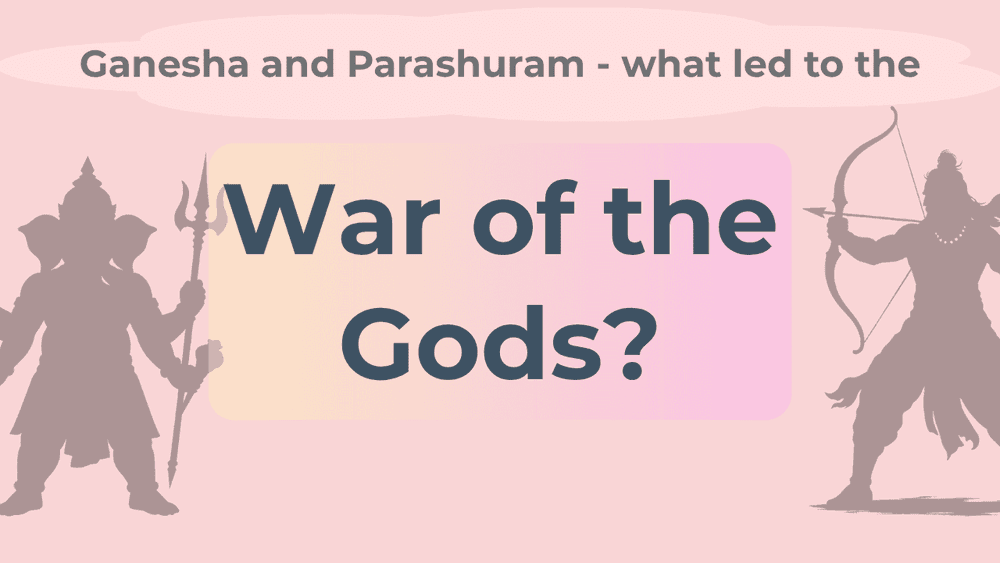The Transformative Power of Sankashti Chaturthi: Story, Significance and Rituals
By Aparna Patni
Discover the legend, rituals, spiritual meaning and blessings of Ekadanta Sankashti Chaturthi for removing life’s obstacles

Table of Contents
Sankashti Chaturthi, observed on the Krishna Paksha Chaturthi of the Jyeshtha month, is dedicated to Lord Ganesha in his revered form as Ekadanta-the One-Tusked. This sacred day holds profound spiritual meaning in Vedic tradition and Jyotish, offering devotees a chance to remove obstacles and invite blessings into their lives.
Date and Rituals of Ekadanta Sankashti Chaturthi
- Date : Krishna Paksha Chaturthi in Jyeshtha month (varies annually)
- Deity Worshipped : Lord Ganesha as Ekadanta
Main Rituals
- Devotees observe a fast and perform Ganesh puja with full devotion.
- Women especially keep this vrat for the long life and protection of their children and some for the blessing of progeny.
- Offerings include sacred thread (janeu), sandalwood, durva grass, rice grains, incense, lamps, flowers and fruits.
- Green cloth, modak, laddoo and malpua are especially dear to Lord Ganesha and are offered as prasad.
- The vrat and puja are performed with strict discipline and purity, seeking Ganesha’s grace for happiness, prosperity and wish fulfillment.
Why Is Ganesha Called Ekadanta?
Lord Ganesha is called Ekadanta because he has only one tusk. Various ancient stories explain the reason for this unique feature:
The Battle with Parashurama
Once, Parashurama, a devoted follower of Lord Shiva, went to Mount Kailash to meet Shiva. Ganesha, guarding his father who was deep in meditation, stopped Parashurama. Enraged, Parashurama fought Ganesha and during the battle, struck him with his axe, breaking one of Ganesha’s tusks.
Other Beliefs
- In some traditions, Ganesha used his tusk to subdue the demon Gajamukhasura.
- Another tale suggests that his brother Kartikeya broke his tusk to tease him.
The Sacred Story of Ekadanta Sankashti Chaturthi
The legends associated with this vrat emphasize that sincere devotion, faith and resolve in Ganesh worship can overcome even the greatest obstacles in life.
The Story of Brahmin Dayadev’s Family
In the Satyuga, there was a righteous king named Prithu, in whose kingdom lived a learned Brahmin named Dayadev. He had four sons and daughters-in-law. The eldest daughter-in-law had observed the Sankashti Chaturthi vrat since childhood. Once, she sought her mother-in-law’s permission to continue the vrat. The mother-in-law questioned its necessity, saying, “You have no troubles, why keep this fast?” Undeterred, the daughter-in-law continued her vrat with faith.
Later, she gave birth to a beautiful son. When the mother-in-law learned she was still observing the vrat, she forced her to stop. Displeased, Lord Ganesha withdrew his blessings. Years passed and when it was time for the son’s wedding, the groom mysteriously disappeared on the wedding day, causing panic in the family.
The daughter-in-law, in tears, told her mother-in-law, “You made me give up my Ganesh vrat; perhaps that’s why this misfortune has come.” Dayadev and his wife were deeply saddened. The daughter-in-law resumed her Sankashti Chaturthi vrat with renewed devotion. Moved by her faith, Lord Ganesha was pleased and the lost son returned safely, allowing the marriage to proceed. From then on, the entire family embraced the Ganesh Chaturthi vrat as an essential part of their lives.
The Brahmin Dayadev’s Family and Ganesha’s Test
Once, Lord Ganesha disguised himself as a frail, learned Brahmin and went begging at the home of a devoted daughter-in-law. He asked, “O daughter, give me enough alms to satisfy my hunger.” She worshipped him with devotion, offered food and even gifted him clothes. Pleased, the Brahmin revealed himself as Ganesha and granted her a boon.
With folded hands, she requested, “If you are pleased with me, please grant me the return of my lost son.” Ganesha blessed her, saying, “Your son will soon return.” Shortly after, her son came home safely and the wedding was celebrated. Thus, the Sankashti Chaturthi of Jyeshtha month is considered a day that fulfills all desires.
The Deeper Message of Sankashti Chaturthi
These stories reveal that Lord Ganesha always listens to the sincere prayers of his devotees and grants them appropriate blessings. Devotees should remember that whenever they worship Ganesha, it should be with a pure heart and complete surrender.
Sankashti Chaturthi is not just a ritual-it is a spiritual journey of faith, patience and unwavering devotion. When observed with true intent, this vrat becomes a powerful means to overcome obstacles, fulfill heartfelt wishes and bring peace and prosperity to the family.
May the blessings of Ekadanta Ganesha remove every obstacle from your path and fill your life with happiness and fulfillment.
Did you like it?
Author
Aparna Patni (40)
Experience: 15
Consults About: Family Matters, Muhurat
Clients In: MP, DL
Share this article with friends and family